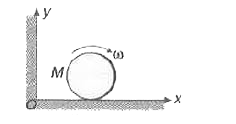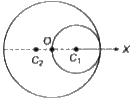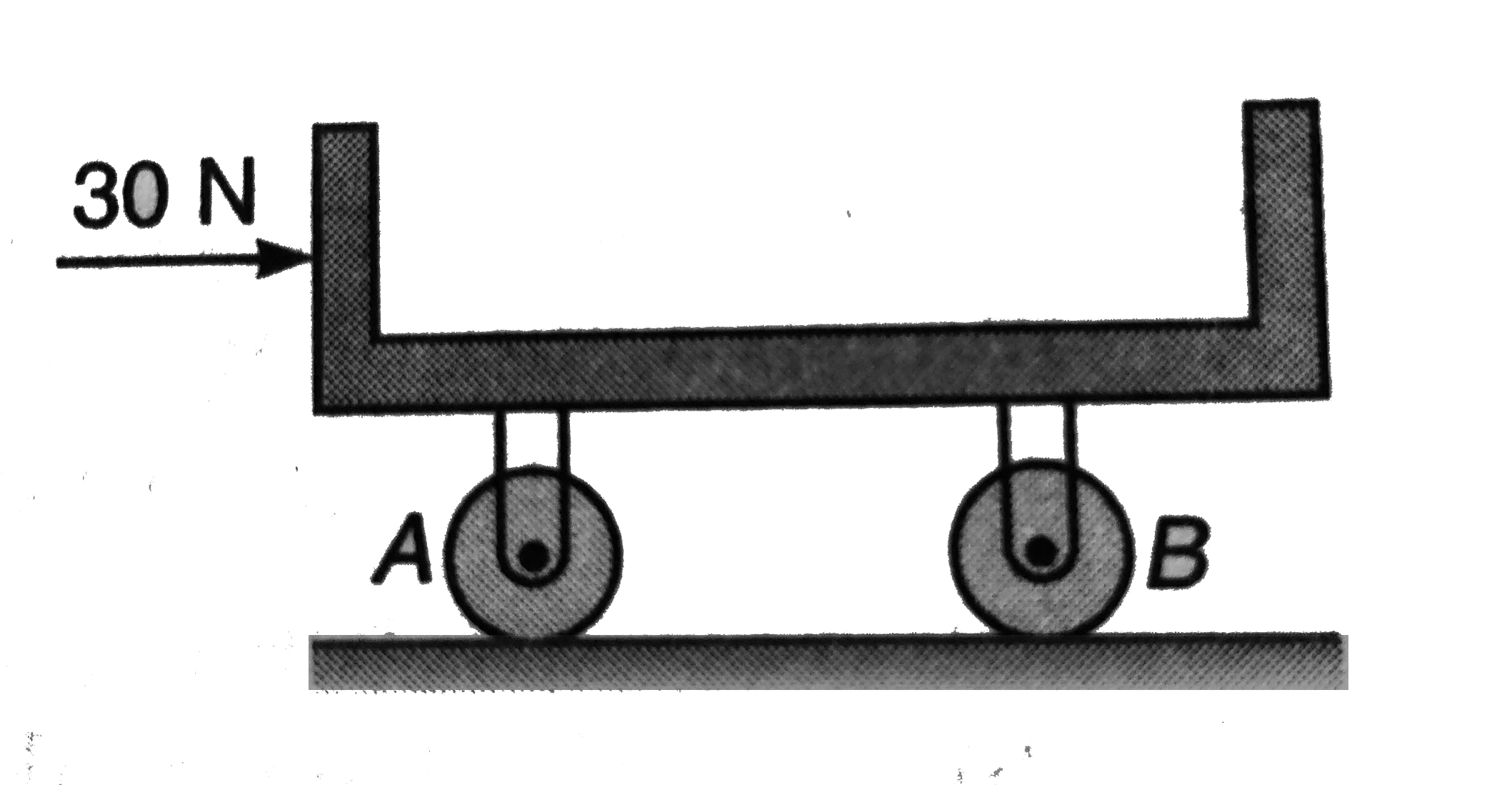A disk of radius r moving on perfectly smooth surface at a speed v undergoes an elastic collision with an identical stationary disk. Express the magnitude and the direction of the velocity of each of tho disks after the collision, as a function of tho impact parameter d (Fig. 10.7a). Calculatious to be made only for the nonrelativistic approximation.

The correct Answer is:v1=vd/2r;v2=v√1−(d2/4r2);sinα2=d/2r;α1+α2=π/2
One of the disks is at rest before the impact, after the impact its velocity will be in the direction of the centre line at the moment of contact (Fig. 10. 7b) for this is the directio~1 in which the force acted on it. Thus, sin a 2 = d/2r, a.1 + a.2 = n/2 (see Problem 10.5). · Since the masses of both disks are equal, the triangle of momenta turns into the triangle of velocities (see figure). We have
v1=cosα1=vsinα2=vd/2r
v2=vcosα2=v√1−d2/4r2

Similar Questions
द्रव्यमान M तथा त्रिज्या R की एक डिस्क चित्रानुसार कोणी चाल ω से क्षैतिज तल पर लुढृक रही है। मूलबिंदु O के परितः डिस्क के कोणीय संवेग का परिमाण है
 04:28View Solution
04:28View SolutionIn Fig. an electron (e) is to be released from rest on the central axis of a uniformly charged disk of radius R. The surface charge density on the disk is +5.00μC/m2. What is the magnitude of the electron's initial acceleration if it is released at a distance (a) R, (b) R/100, and (c ) R/1000 from the center of the disk ? (d) Why does the acceleration magnitude increase only slightly as the release point is moved closer to the disk ?
 View Solution
View SolutionFigure 10-75 shows three rotating, uniform disks that are coupled by belts. One belt runs around the rims of disks A and C. Another belt runs around a central hub on disk A and the rim of disk B. The belts move smoothly without slip-page on the rims and hub. Disk A has radius R, its hub has radius 0.5000R, disk B has radius 0.2500R, and disk C has radius 2.000 R. Disks B and C have the same density (mass per unit volume) and thickness. What is the ratio of the magnitude of the angular momentum of disk C to that of disk B?
05:09View Solutionत्रिज्या R की एक समान वृत्ताकार डिस्क से त्रिज्या R/4 की एक समाक्ष छोटी वृत्ताकार डिस्क काट ली गई है। यदि सम्पूर्ण डिस्क का केंद्र O हो तो शेष डिस्क के द्रव्यमान केंद्र की O से दूरी होगी
 06:40View Solution
06:40View SolutionA ball moving with a velocity of 6 m/s strikes an identical stationary ball. After collision each ball moves at angle of 30^@ with the original line of motion. Assuming that the collision is elastic, what are the speeds of the balls after the collision?
View Solution
The 9 kg cradle is supported as shown by two uniform disks that roll without sliding at all surfaces of contact. The mass of each disk is m=6kg and the radius of each disk is r=80mm. Knowing that the system is initially at rest, determine the velocity of the cradle after it has moves 250 mm.03:34View SolutionSolve the previous problem assuming the mass of the moving disk to be m2 and its radius r1, and the corresponding magnitudes of the stationary disk to be m2 and r2 (Fig. 10.8a).
 View Solution
View Solution
